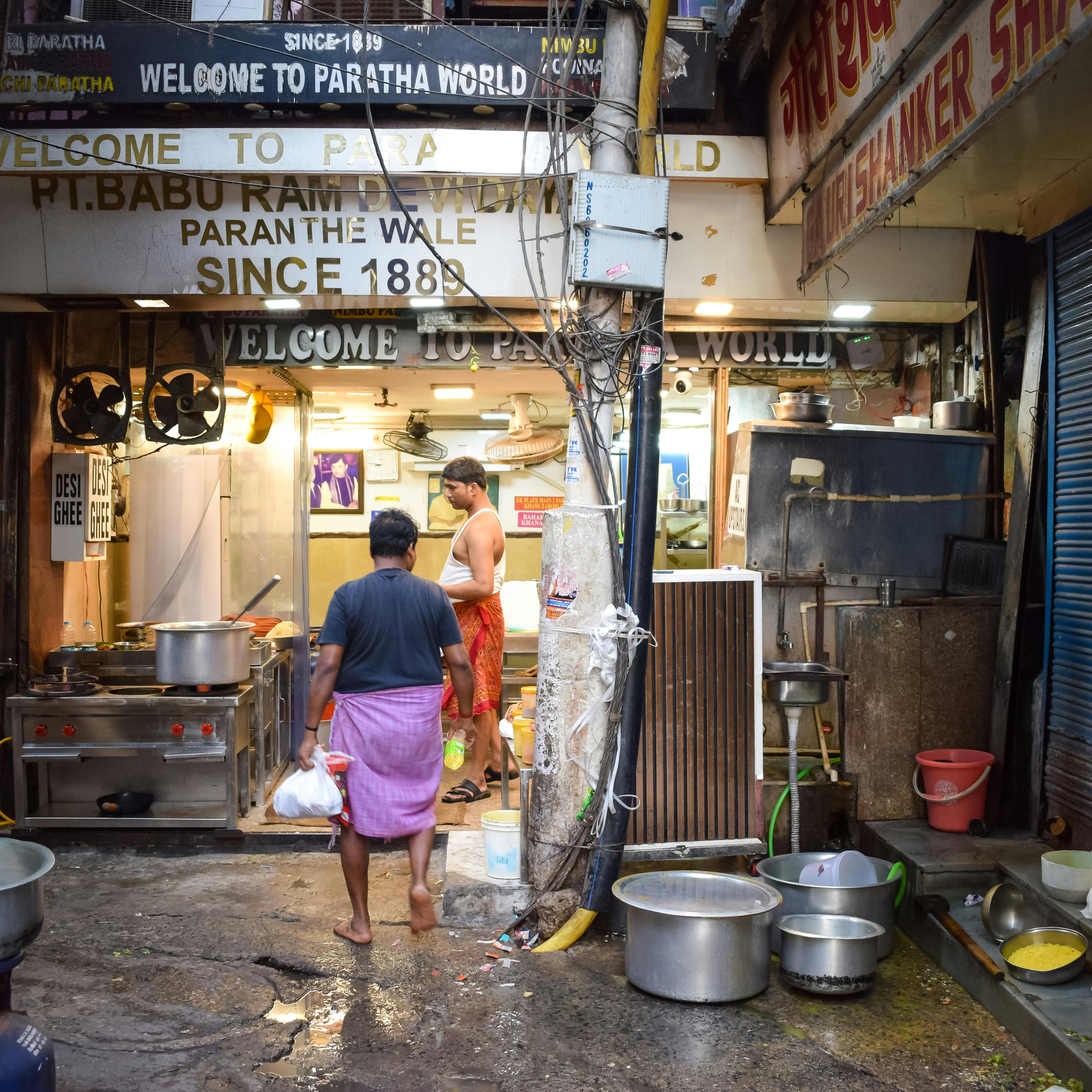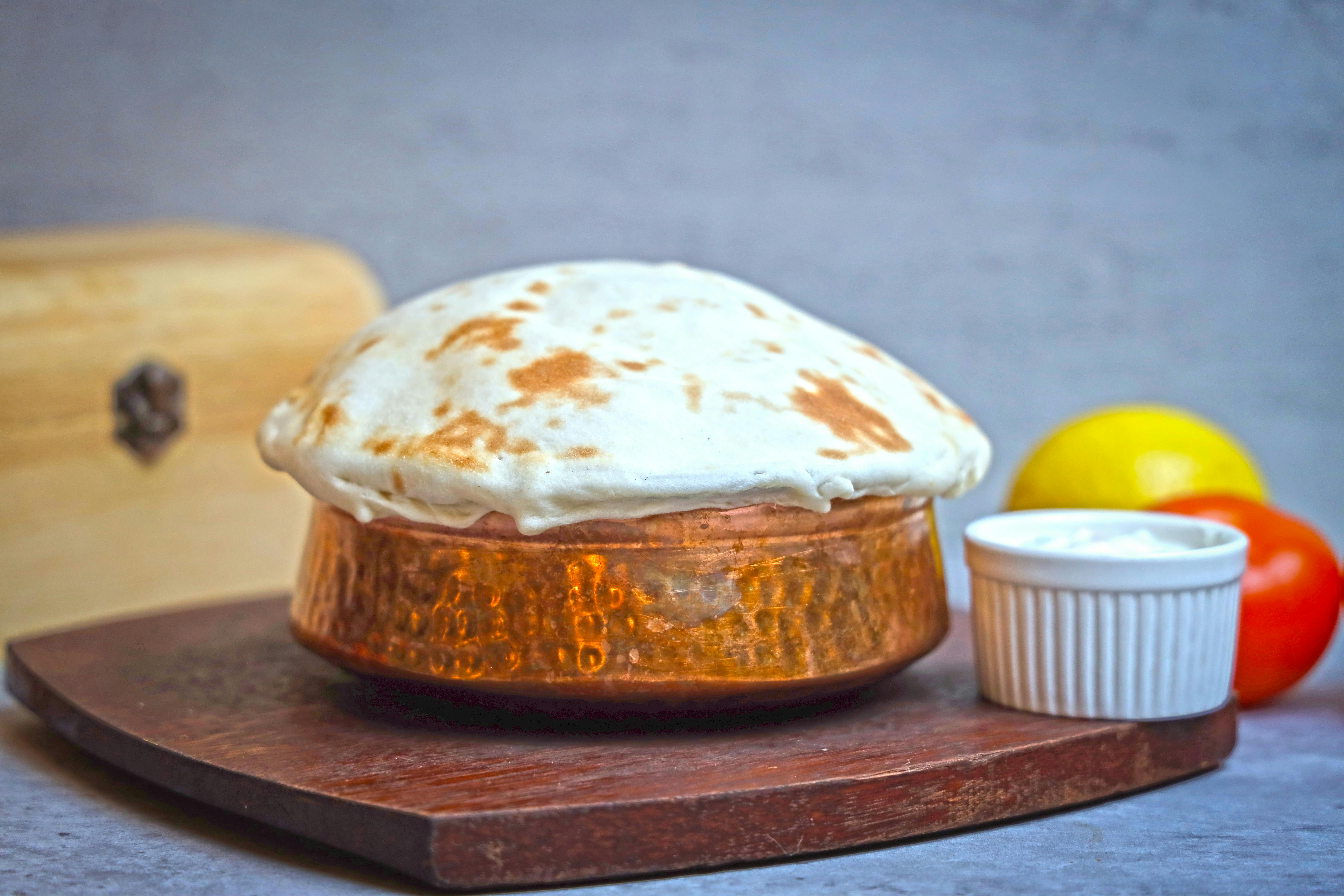Indian-Malaysian Cooking Techniques for Vibrant Restaurant Flavors
Having spent countless evenings trailing behind chefs in bustling Penang eateries and quietly learning from home cooks in Kuala Lumpur’s Indian enclaves, I’ve come to realize something fundamental about Indian-Malaysian food: it’s not just a blend of spices—it’s a dynamic, almost electric dialogue between cultures, history, and the present moment. Funny thing is, many people travel thousands of miles chasing after “authentic” Indian food, not realizing that some of the most complex, dazzling flavors exist in Malaysia, created not in imitation, but in authentic evolution. The vibrancy—the colors, aromas, subtle layering—always hits me anew, whether standing in a crowded banana leaf restaurant or squeezing into a roadside mamak stall, spoon in hand.
So, what’s different about Indian-Malaysian spice techniques? Not just the ingredients or the cooking hardware, but the way tradition collides with improvisation at the hands of cooks raised in kitchens where every day’s menu nods to Tamil, Telugu, and Malay roots, paired with Chinese and indigenous influences. As I write this, a question keeps swirling: How do these kitchens produce flavors so distinctive that food scholars and Google reviewers alike debate the subtle “Malaysian twist” in every curry? Let’s break it down—from the everyday spice blend to the professional pan-flick, and get to the heart of what sets Indian-Malaysian restaurant cooking apart.
Cultural Connections Driving Spice Fusion
Let me step back for a second—before we start talking about techniques, it’s crucial to understand how the Indian community in Malaysia developed its own culinary fingerprints. Between the 1800s and early 1900s, waves of South Indians (mostly Tamils, but also Malayalees, Telugus, and a minority of Punjabis) settled in Malaysia, contributing not just their culinary know-how, but an ingenious adaptability to their new home’s bounty of produce, seafood, and tropical flavors1. What really strikes me is how these chefs never lost the respect for spice hierarchy, even as they learned to adjust for local tastes—using coconut milk, pandan, and sometimes even belacan (fermented shrimp paste), in ways you won’t see in Indian cuisine elsewhere.
Those foundational recipes for kari (curries), masala stir-fries, and spicy chutneys were transformed in Malaysian kitchens. Sure, some folks still swear by imported dried chillies and coriander seeds, but many kitchen pros rely on locally milled powders and fresh-ground pastes that make their sambal and rendang unmistakable—almost haunting in their depth. I reckon this collaborative adaptation is why Indian-Malaysian restaurant food rarely tastes the same twice: even the old-school banana leaf rice spots and modern mamak joints each have their own “secret blend.”
Key Insight: The Spice “Dance”
Indian-Malaysian cooks practice a kind of “spice dance”—layering whole, ground, and toasted spices in stages. It’s not just what goes into the pot, but when and how. For example: mustard seeds spluttered first, curry leaves torn and dropped next, dry powders cascaded late so nothing burns or tastes raw. The goal is to build flavor in waves—never all at once. This choreography matters more than exact spice measurements2.
Signature Spices & Key Blends
Ever notice how a restaurant’s “signature flavor” seems to outshine anything you try at home? That’s not just nostalgia talking. These kitchens wield blends with centuries of adaptation—fenugreek, fennel, cumin, and star anise often paired with cinnamon, cardamom, and dried chili. In my experience, “kari powder” is both a science and an art. Too heavy on black pepper, and it’s overpowering. Too shy with turmeric, and the color never quite pops. There’s a balancing act, often tweaked for different protein or vegetable bases.
- Mustard seeds—spluttered for aromatic depth
- Curry leaves—fresh or dried, for citrusy lift
- Star anise and cloves—Malay influence, rich “warming” effect
- Pandan—used for subtle vanilla undertones
In restaurant settings, these spices are ground in heavy granite mortars or spun in industrial grinders. Some chefs toast whole seeds, cool them, and then grind for next-day use; others swear by cold-pressed coconut oil as their base for “tempering.” The question I’m always asking—does the order of adding spices matter? Resoundingly, yes. Sequence equals synergy.
Restaurant Craft: Kitchen Techniques
Restaurant kitchens aren’t just scaled-up home setups. They are staged arenas of flavor: prep cooks pounding fresh masala pastes, wok chefs flicking sambal upwards in a smoking pan, servers spooning out hot rasam into waiting bowls. It’s chaotic, sure, but every gesture is deliberate. The heat is higher, the spice pastes are more potent, and the “finishings” (crispy shallots, tangy pickles) are more assertive.
Speaking with Chef Anandh, who runs a well-known Indian restaurant in Ipoh, he told me, “It’s not just about adding more spice—it’s about layering each taste so people crave another bite. The right fry, the right tempering, the right balance of tang and flesh.”
Country Fact: Malaysia’s Indian Diaspora
Callout: Chef Insights & Home Secrets
Chef’s Secret
Restaurant cooks often emulsify curry sauces with fresh coconut cream, adding it late for “layered” fat that preserves both spice bite and gentle sweetness. Some swear this creamy finish is what sets Tamil-Malaysian meals apart from their South Indian forebears3. My own experiments usually confirm this!
First Impressions: The Layers of Flavor
The first spoonful in an Indian-Malaysian restaurant—whether it’s lentil-rich sambar or smoky mutton curry—unlocks a spectrum of flavors and textures impossible to unpack in a single sentence. I used to think “layered flavor” was marketing fluff until sitting down with a KL food historian who mapped out the construction of a sambal: base aromatics, dry spices, moisture infusion, acidic punch, and textural garnish—all in seamless succession. This is where restaurant technique matters most—and where I’ve learned the most by watching, tasting, and sometimes making mistakes alongside the pros. On second thought, it’s never just about following a recipe, but tuning palate and process, again and again.
Signature Profiles: From Sambal to Banana Leaf
The thing I find remarkable about Indian-Malaysian restaurant cuisine is its commitment to craft—even with everyday staples. While banana leaf rice remains a beloved classic, the riot of sides reveals a symphony of cooking techniques: slow-braised brinjal, crispy bitter gourd, spicy fried potatoes, and a never-too-thick dhal, all arranged in tight formation around the rice. Here’s what I’ve learned: each dish, however humble, requires discrete spice sequencing and careful heat control.
Take sambal, for example. Each cook, each restaurant, has their “house style.” Some versions go wild with dried shrimp; others focus sharply on fiery chili with roasted onion. Freshness matters, but so does the oil—double-filtered groundnut oil in some places, coconut oil in others, both creating entirely different aromatic profiles. During my stints shadowing mamak cooks, I saw how the right spice paste, pounded in a stone mortar, gives depth that supermarket jarred sambal can never match4.
- Preparation of sambal varies regionally—Penang’s version uses tamarind for sharp tang, while KL variants favor a mellow, longer-cooked chili base.
- Banana leaf rice is typically served with 5-7 sides, each utilizing distinct spice combinations and fry techniques.
- Poultry and mutton are often marinated overnight in turmeric, ginger, and yogurt—a gentle process that tenderizes and flavors deeper than a quick stir-fry.
Expert Quote: Restaurant Evolution
“The secret is not in the spices alone, but in how they are teased, heated, finished—sometimes even in the air allowed to circulate over a steaming pot. Indian-Malaysian cuisine relies on deep respect for timing and intuition.”
Multi-Level Spice Layering: How Restaurants Do It
Let’s break down the actual method behind the vibrancy. Restaurant chefs typically layer spices in three key stages:
- Tempering Aromatics—Mustard seeds, curry leaves, and sometimes dried chilies are fried in hot oil until they burst, releasing base flavor.
- Building the Body—Ginger-garlic paste and onion are cooked down, followed by powdered coriander, turmeric, and cumin. Some kitchens add tomatoes now for moisture.
- Finishing Layer—Coconut milk, tamarind water, or yogurt are folded in gently, followed by a final spice dusting (garam masala, fennel powder) for top notes. Cooks often adjust salt and acidity to personal taste just before serving.
Key Technique: “Blooming” the Spices
Many Indian-Malaysian restaurant chefs swear by “blooming”—that is, giving dry spices a moment in hot oil before adding wet ingredients. This technique unlocks volatile oils from fenugreek and cumin, intensifying flavor profiles5. I’ve made mistakes here myself, burning spices or adding them too late, and learned the consequences firsthand.
Mobile-Friendly Table: Core Spice Comparison
| Spice | Indian Origin | Malaysian Adaptation | Common Dishes |
|---|---|---|---|
| Mustard Seeds | Temper base for curries | Often used with pandan, alongside curry leaves | Sambar, Rasam, Fish Curry |
| Curry Leaves | Fresh in most South Indian dishes | Dried for storage, used fresh when available | Banana Leaf Rice, Masala Dosa |
| Fenugreek | Adds bitterness | Used sparingly for balance, often toasted | Fish Curry, Lentil Stew |
| Pandan | Rare in India | Key aromatic in rice and desserts | Nasi Lemak, Coconut Rice Pudding |
Nuanced Flavor Understanding
What stands out to me is how professional cooks draw subtle boundaries between dishes that must “bite” (think: fiery dry curry) and dishes that must soothe (like lentil dhal). The decision isn’t random—it derives from an intuitive reading of diner preferences and ongoing experimentation. In fact, during a late night kitchen session in George Town, I watched a head chef tweak the acidity of his mutton curry three times, using both lime and tamarind, before declaring it “done”—not for textbook flavor, but for the specific group of regulars expected that night.
“Our job is to excite the palate and then calm it, creating a meal that oscillates between heat, brightness, and comfort. There is no single ‘Malaysian’ way—only the way each cook learns from mistakes.”
Questions Worth Reflecting On
- Why do some restaurants favor coconut milk over dairy, and what does that mean for flavor?
- How does climate (humidity and heat) shape the way spices are stored and blended in Malaysia?
- What role do local produce markets play in evolving northern versus southern flavor styles?
- Are home cooks influencing restaurant technique—or vice versa?

From Home Kitchen to Restaurant: Bridging Tradition and Scale
In my experience, the leap from home cooking to restaurant scale in Indian-Malaysian food is not about simply multiplying a recipe. What consistently surprises me—and sometimes frustrates me!—is the way familiar techniques need rethinking. The small “tadka” of a home meal becomes a 10-liter fry in the commercial wok. You cannot (and shouldn’t) just dump twice the amount of turmeric or garlic; flavors scale unevenly, and some spices overpower everything else.
Chef Prema of Penang’s famed Chulia Street curry house told me, “In a restaurant, control is everything: heat, oil, spice ratios, even the quality of water. The same masala blend tastes different daily because ginger one day is juicier, pepper another is hotter. That’s why we trust our tongues first—science second.” I love this approach, honestly, because it breaks the myth of “perfect reproducibility” and celebrates the living spirit of Malaysian kitchens.
Restaurant Adaptations for Consistency & Impact
Efficiency vs. Authenticity
The best Indian-Malaysian restaurants invest in turbo-charged hardware—wok burners, grinders, bulk spice storage. Yet, crucial steps (fresh tempering, hand-tasting, multi-stage layering) are never skipped, even on busy nights. Automation is limited: skill saves tradition from disappearing. I used to think shortcuts would dominate, but old-school method reigns supreme, for now6.
- Bulk spice blending occurs weekly, with adjustments based on climate and supplier quality.
- On-the-fly tasting and adjustment is built into every prep session.
- Fresh-cooked accompaniments (fried shallots, coconut sambal) are rarely outsourced, for control over freshness.
More or less, high-volume cooking amplifies both the risks and the rewards. I made a huge mistake in my own restaurant trial—scaling up chili powder without recalibrating salt, resulting in a dish that looked beautiful but tasted… odd. Actually, let me clarify: every chef I spoke to could recount similar blunders, and all agreed that learning from these is more valuable than any handed-down recipe.
Cross-Cultural Mashups: Contemporary Innovations
Here’s where things get super interesting. Indian-Malaysian restaurants increasingly riff on tradition—not abandoning roots, but combining, contrasting, remixing. I’ve tasted naan pizzas swiped with sambal, biryani spiked with pandan, and vegan curries built around local jackfruit instead of imported paneer. The culinary scene is restless, curious, and sometimes plain bonkers (in the best way).
“Malaysian Indian cooking has always been hybrid. We borrow from Malay, from Chinese, and even Western trends. Limiting ourselves is not the tradition—adapting is.”
Nowadays, fusion may spark debates in food circles, but in Malaysia, clever blending is the foundation—not the exception. Younger cooks aren’t afraid to swap in local vegetables, try gluten-free thosai, or add raw mango to sambal, challenging diners while respecting flavor logic.
Seasonality, Sourcing, and Local Markets
Anyone who’s strolled through a Malaysian wet market knows the sensory richness: stacks of fresh curry leaves, thumb-sized ginger, bundles of pandan, piles of dried chili in scarlet heaps. In restaurant kitchens, sourcing means bargaining skill and knowing the “good” days for produce. For instance, rainy season boosts fenugreek’s pungency; dry season means chillies are less damp and easier to fry crisp. These market rhythms, strangely, mean restaurant menus fluctuate more than most expect—a genuine difference from the “static” Indian restaurant model in the West7.
Local Market Wisdom
The best chefs know that spice flavor is rarely static. They build relationships with market vendors, taste in situ, and adjust recipes by the day. Yesterday’s coriander batch might sing; next week’s might need rescue with extra lime or fenugreek. Region and season both matter.
Restaurant Cooking Process Table
| Step | Technique | Result | Dish Examples |
|---|---|---|---|
| Tempering | High-heat fry in oil | Maximizes aromatics, deepens base flavor | Rasam, Dhal Tadka |
| Layering | Stepwise addition of spices and liquids | Rich, nuanced body and balanced spice | Chicken Curry, Fish Kari |
| Finishing | Final adjustment and fresh topping | Acidity/richness corrected, texture enhanced | Mutton Varuval, Sambal Udang |
Authenticity vs. Evolution: Debates in Food Circles
Let me think about this: every time I try to pin down what makes an Indian-Malaysian dish “authentic,” someone throws me a curveball with evidence of historic adaptations, changing tastes, or ingredient swaps necessitated by local supply. The more I consider, the more convinced I am that “authenticity” lives in adaptation, not stasis. Restaurant chefs embody this truth daily by tweaking recipes, responding to diner feedback, and bringing new generations of eaters along for the ride.
Restaurant Experience: How to Savor the Vibrant Flavors
If you’ve never set foot in a bustling Malaysian Indian restaurant, let me sketch the scene: crisp air, waves of conversation, the clang of tin plates, and the steam rising off curries in vats big enough for a crowd. Your senses are jolted, not just by chili heat, but by layers of aroma—nutty, earthy, floral, even citrusy notes playing their part. Whether you go for banana leaf rice (with its ceremonial arrangement and communal etiquette) or a stand-alone biryani or mutton varuval, the experience is more than nutritional: it’s emotional, cultural, and, by my reckoning, spiritual.
I recall my first proper restaurant “thosai breakfast” in Petaling Jaya—rows of crispy pancakes, side bowls for every conceivable dip, and the gentle reminder from the server: “Mix sauces however you wish.” That freedom… it embodies the Indian-Malaysian kitchen’s soul. The joy comes not from rigid formula, but from playful engagement and customization, allowing each diner to shape the dance of flavor.
Getting Involved: Learn, Taste, Share
Authentic Action Steps
- Seek out restaurants with visible spice preparation—watch staff blend, taste, and adjust.
- Experiment at home with multi-stage spice layering and fresh tempering.
- Ask questions of chefs and market vendors about their favorite local ingredients.
- Share your discoveries—unique recipes, unexpected flavor combinations—with your community or favorite foodie platforms.
Getting curious transforms dining from passive consumption into learning and sharing—a core value in vibrant Indian-Malaysian culinary culture8. Don’t worry about perfection; relish the process, embrace mistakes, enjoy the surprises.
Reflecting on Techniques, Cultures, and Flavor
So where does that leave us? Indian-Malaysian restaurant cooking is not hierarchical—it’s inclusive, generative, both respectful of tradition and wildly inventive. If you’re a cook, traveler, or simply an eater, know that the secret is not only in recipes, but in curiosity, adaptation, and lived experience. Historically, waves of migration and chance introduced new ingredients9, fresh methods, and rival taste philosophies. Today, what matters is the skill and wisdom with which each kitchen writes new flavor stories—sometimes bold, sometimes subtle, always alive.
“Flavor evolves, and so must we. Indian-Malaysian cuisine grows more vibrant because we celebrate difference, ask questions, and never stop tasting.”
Thoughtful Questions & Discussion
- Which Indian-Malaysian dish has surprised you most in flavor or complexity?
- How do you think migration continues to shape restaurant cuisine?
- Is authenticity about who cooks, or how ingredients are sourced?
- If you were to invent a new fusion dish, what would you blend?
References
Citations & Further Reading



